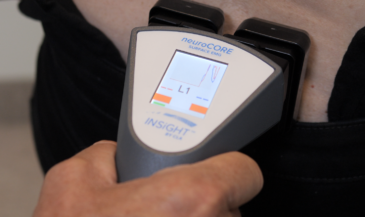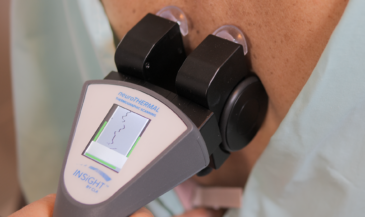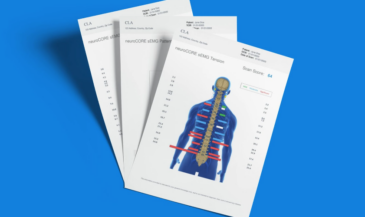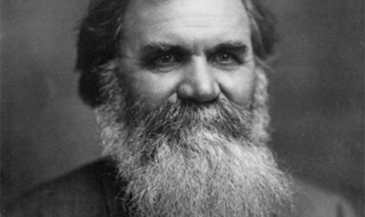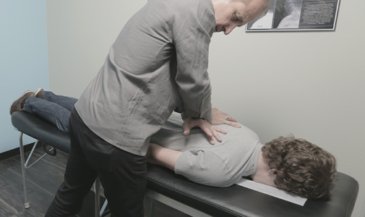Many students of chiropractic are being taught that chiropractic is a subset of medicine, specializing in the manipulative treatment of a narrowly defined array of spinal pain syndromes. Standards of care, insurance reimbursement guidelines, and state board policies are beginning to reflect this paradigm. Why?
Major changes in chiropractic education were initiated in the early to mid-1970s. At this time, chiropractic colleges were accredited by either the American Chiropractic Association (ACA) or the International Chiropractors Association (ICA). In an effort to “upgrade the image” of the profession, both the ACA and the ICA decided to pursue federal recognition for their respective accrediting bodies. The ACA had the Council on Chiropractic Education (CCE) and the ICA schools were represented by the Association of Chiropractic Colleges (ACC). The latter is not related to the current ACC.
Heated debate characterized the efforts of the two bodies to approach the federal government with one agency. An agreement was reached to defer the submission of formal applications for DHEW recognition by both groups. It was hoped that the two associations would be able to resolve their differences and approach the federal government with one agency. Despite this agreement, the CCE submitted an application and obtained approval while the ACC waited as promised.
No time was wasted persuading state boards to mandate that only graduates of CCE-accredited colleges could apply for licensure. This was sold to the profession as a necessary step in “upgrading the image of the profession.” Those who resisted were branded intellectual dinosaurs. “How can anyone oppose improving chiropractic education?” they asked. Student support was obtained by dangling the carrot of student loans.
For the ICA colleges, there seemed to be no practical alternative to seeking CCE status, since a growing number of states demanded that applicants for licensure graduate from a CCE college. As the treasurer of one college stated to a dissenting faculty member, “What else can we do? If we don’t get CCE status, we’ll lose so many students we may have to close.” The die was cast. The conspirators won round one.
The CCE’s approach in the days immediately following DHEW approval was autocratic. “If they aren’t strict, we might lose DHEW approval, and then graduates couldn’t sit for boards in many states.” This, of course, was of their own doing. Under the iron fist of the CCE, radical changes were instituted which affected the philosophical paradigm of traditional ICA colleges.
Early CCE standards demanded whole body diagnostic training. The rationale was that whole body diagnosis was required of a primary/portal of entry health care provider. This, however, was not the case. A letter from DHEW clearly stated that in using the term “primary health care provider” there was “no intent to or authorization to change, or even define the authority, scope of practice, or function of the occupation concerned.” (1)
The CCE was not content to coerce dissenting colleges into joining. Free speech was cast to the wind, with the CCE demanding “loyalty, advocacy, and support of the Council” from all sponsors. (2) In a move unprecedented in academia, the CCE ostensibly stripped the once prestigious Ph.C. degree from those holding this credential! No new Ph.C.s were conferred, and the credibility of the degree, and those holding it, was severely damaged.
CCE faculty/student ratio requirements necessitated the rapid hiring of large numbers of faculty. In the basic sciences, enthusiastic D.C.s were often replaced with Ph.D.s unfamiliar with chiropractic. At least one told first year students that as far as he was concerned, “chiropractic is a lot of bunk.” When students asked why they were paying tuition to be taught by an instructor who thought chiropractic was “bunk,” they were told to put up with it. “You want your student loans, don’t you?”
At one time, most chiropractic college applicants had a positive personal experience with chiropractic care, and wanted to share it with others. Many were “second career” students, who left successful jobs and businesses to study chiropractic. This was soon to change.
Two years of pre-professional study was mandated, with specific course requirements that discouraged all but the most tenacious. Soon, instead of chiropractic zealots, it was not uncommon for the majority of students in a matriculating class to have never experienced a chiropractic adjustment. When these students were told by their professors that the profession they were entering was “unproven,” “bunk,” or worse, is it any wonder that many of them closed their minds to traditional chiropractic philosophy? This phenomenon is a major cause of the low perceived value of chiropractic education and chiropractic care common today.
Fortunately, the CCE of today has moderated its autocratic approach. It is now up to the colleges to ensure that the student of today graduates with a strong philosophical base and a keen awareness of the profound potential of chiropractic’s contribution to human health.
The fundamental issues are simple. Are we a profession with a clearly defined mission, or are we a profession simply seeking some niche which offers access to a slice of the health care pie? Are we driven by principles or politics? Is our political position defined by our mission statement, or do we grovel to get whatever crumbs the insurance industry tosses our way? Do we have an identity defined by our purpose, or are we chameleons who change our colors to blend into the existing environment?
In discussing the diversity of individuals in the profession, B.J. Palmer stated, “When it comes to CHIROPRACTIC we are agreed upon Innate, subluxation, and adjustment…Chiropractic overshadows dissolution and produces union.” (3) He was aware that unity would occur when chiropractors were driven by principles.
References
1. Letter from David A. Kendig, M.D., Deputy Director, Bureau of Health Manpower, DHEW, to Reginald R. Gold, D.C., Ph.C., Jan. 30, 1976.
2. Letter from Orval Hidde, D.C. (CCE Commission Chairman) to Joseph Mazzarrelli, D.C. (ICA President), July 11, 1977.
3. Palmer BJ: “Answers.” The Palmer School of Chiropractic. Davenport, IA. Vol. XXVIII. 1952. Pages 711-713.

























































